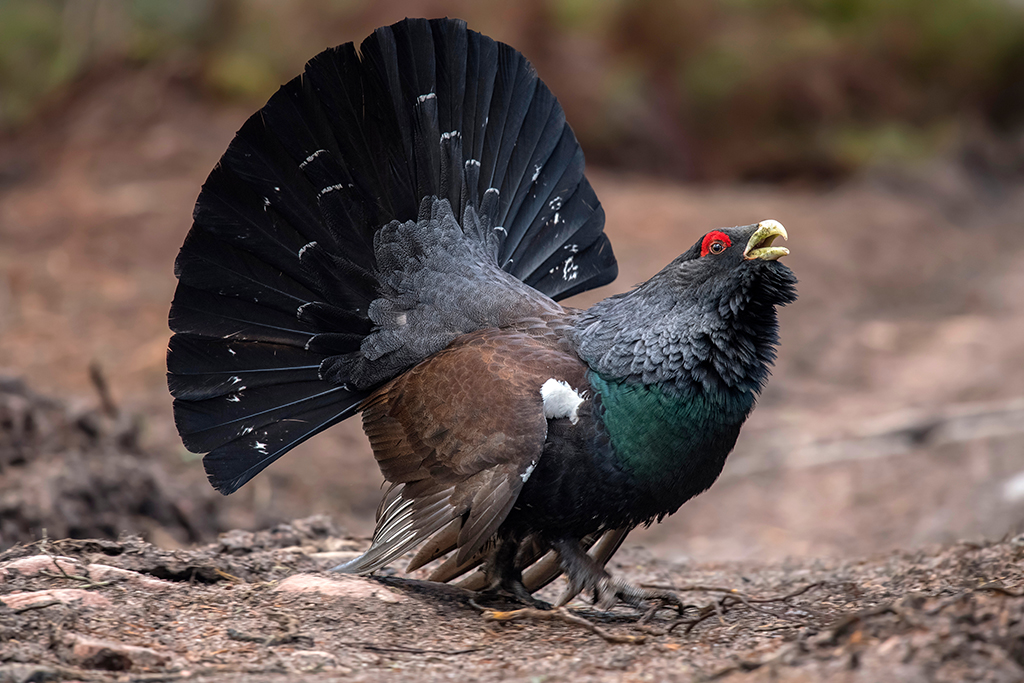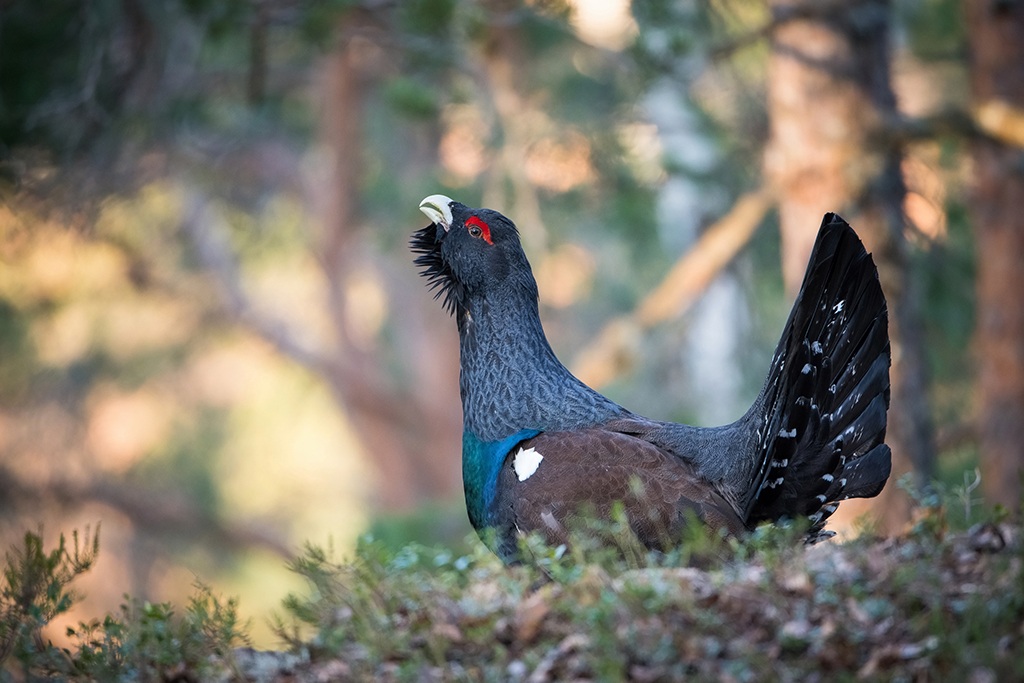The Cairngorms Capercaillie Project is creating new jobs to help the environment and the economy – and save the capercaillie.
With the Cairngorms National Park now home to nearly 90% of the remaining birds, the Cairngorms Capercaillie Project has recruited a number of local residents within the National Park to help more people help the endangered species and save the iconic capercaillie from extinction in the UK.
Appointed within the last few months were a variety of green roles – from rangers to communications specialists. Those appointed bring experiences from a variety of different professional backgrounds but are united in a common passion for the people, wildlife and businesses in the Cairngorms.
Thanks to funding from The National Lottery Heritage Fund, the Cairngorms Capercaillie Project will allow for real community-led action over the next two years to help the endangered bird, of which there are now thought to be less than 1,000.
Carolyn Robertson, project manager for the Cairngorms Capercaillie Project, said: ‘Capercaillie are in serious decline and in the midst of such difficult times economically as well, I’m proud that we’ve been able to bring money into the Park and create jobs that will not only benefit the local economy but also the environment and our local wildlife, which has become so important to our health and well-being over the last year.’

A capercaillie in a forest in the highlands
Former seasonal ranger and wildlife guide, Duncan Macdonald, is based in Kincraig – he will be out and about in local areas in his role as Community Ranger working with the Carrbridge Capercaillie Group and the Badenoch and Strathspey Trail Association, helping them to deliver actions for capercaillie, which include improving paths and making the National Park an even more enjoyable place to be.
More than 10,000 hectares of habitat are set to be improved for capercaillie as part of the project, which is where capercaillie advisory officer Molly Doubleday and assistant Helen Gray come in. They will be working on the ground with land managers to drive forward this work; expanding forests, removing fences and controlling deer, using their years of conservation experience in the Cairngorms.
They’ll also be keeping a close eye on the capercaillie population and feeding into the scientific research the project is undertaking to uncover the genetic diversity of that population.
In his role dedicated to predator control and habitat management, the gamekeeper in the team, David ‘Poppy’ Clark, is stationed at Seafield Estate in Grantown. He’s already working hard to make living conditions safer and more accommodating for the bird.
He said: ‘Keeping predator and deer numbers low in capercaillie habitat is one really important measure to take if we want to help the species survive and that’s something that forms a big part of my job as a gamekeeper. Being part of the project team is a great chance to use the skills and knowledge I have to give capercaillie a fighting chance, alongside all the other things we’re doing to help the bird.’

With local communities in the National Park also keen to play their part, Nethy Bridge based Project Officer, Elspeth Grant – coming on board from the Tomintoul and Glenlivet Landscape Partnership Project – will be working with them to help them develop and deliver their own capercaillie action plans.
Providing vital administration support across the project is Naomi Kaye. Sadly left unemployed due to the pandemic, Naomi is an Aviemore resident and qualified outdoor instructor.
Communications officer Jocasta Mann, a former Grantown Grammar School pupil and wildlife enthusiast, is also on board to help bring communities and partners together by sharing important messages about the bird and the project’s work.
She concluded: ‘Each team member you meet on the project could have a very different conversation with you, and I think that’s brilliant.’
TAGS

